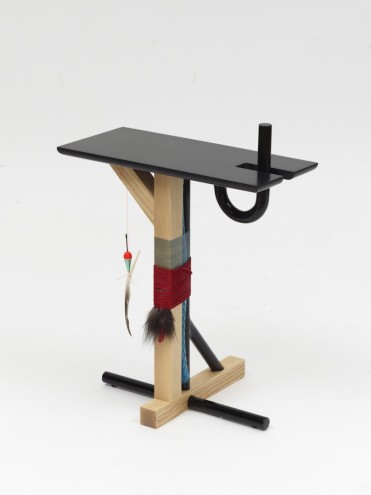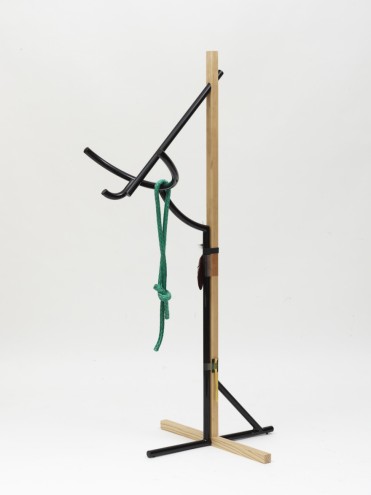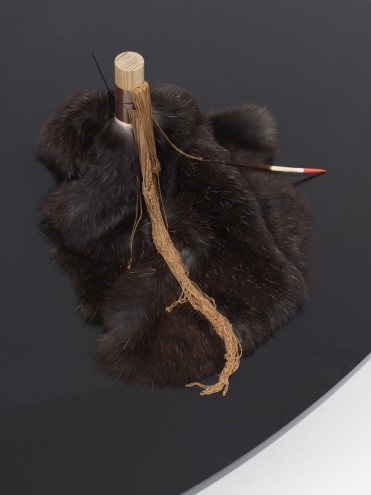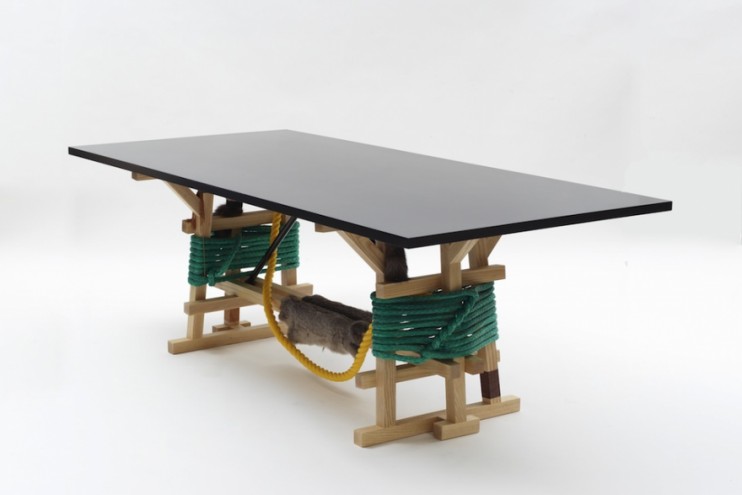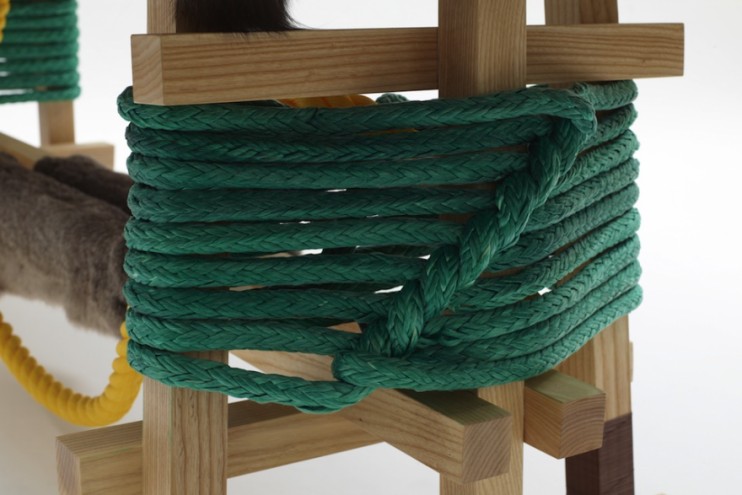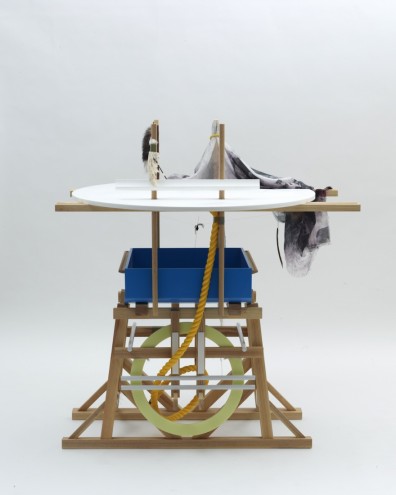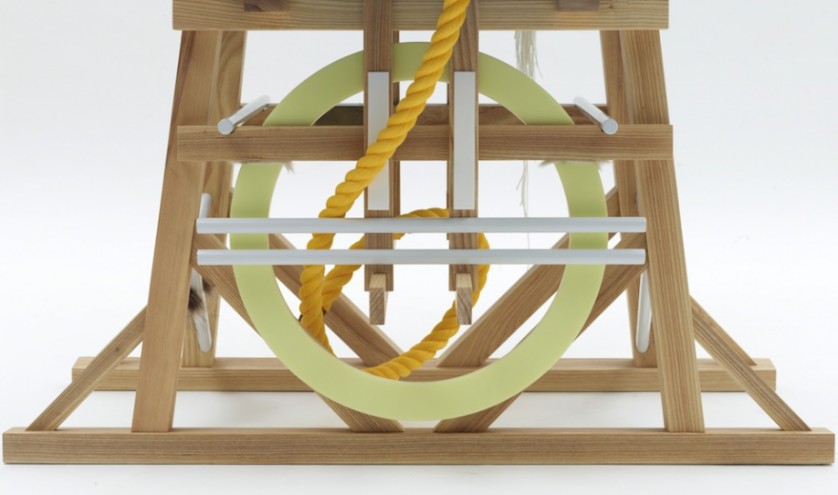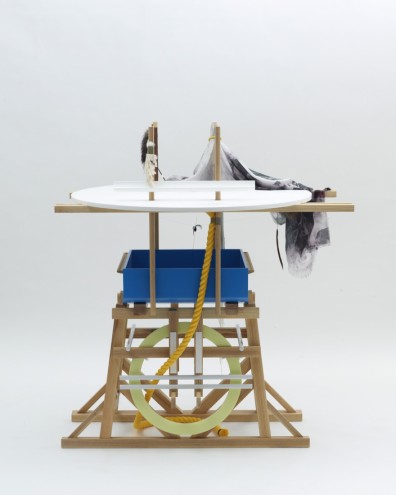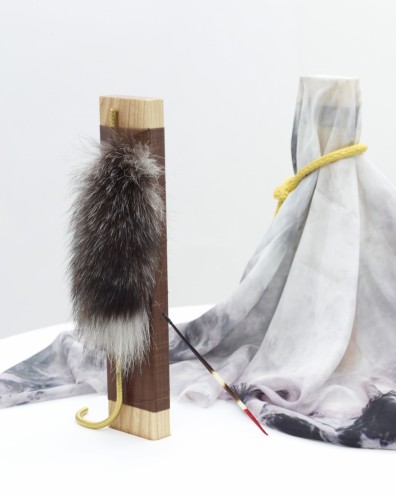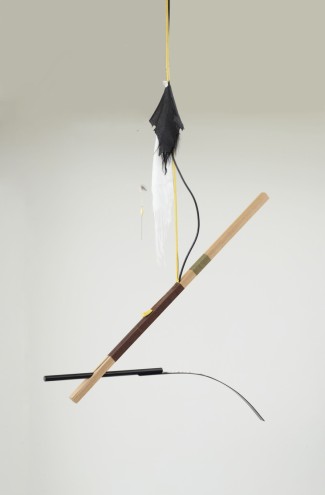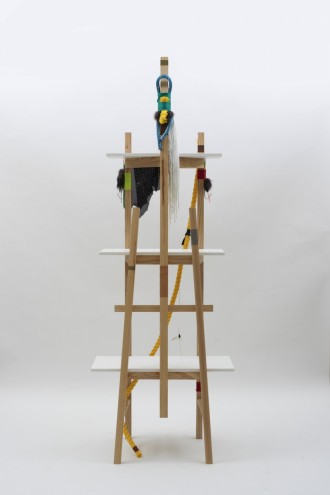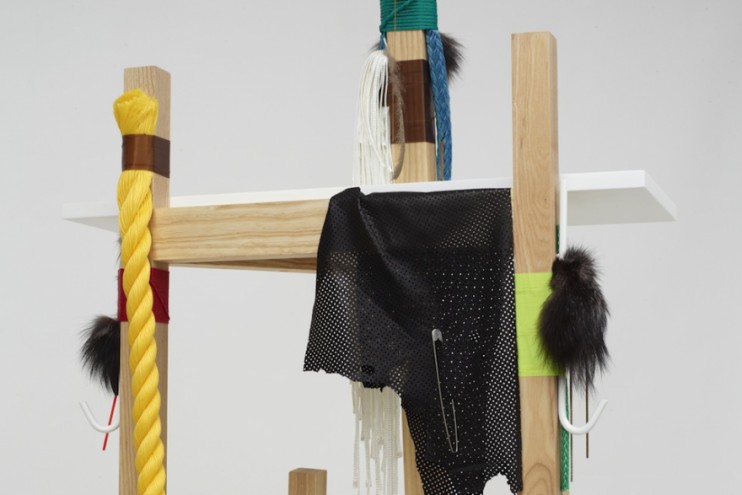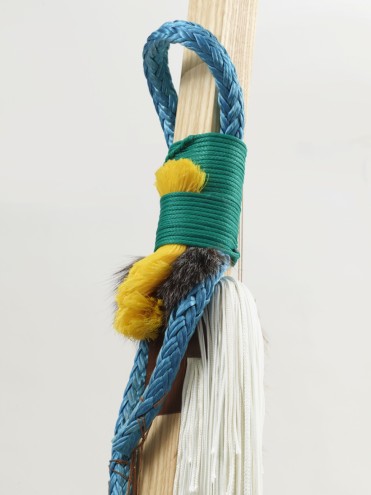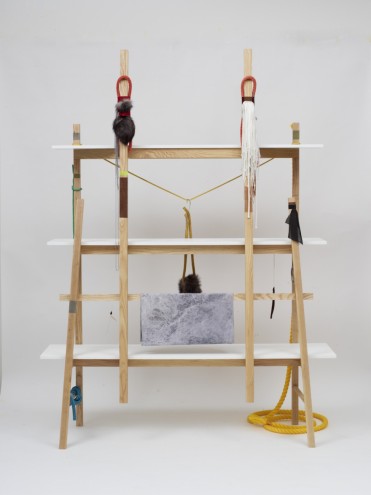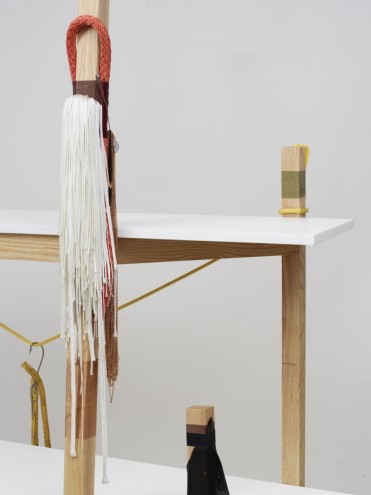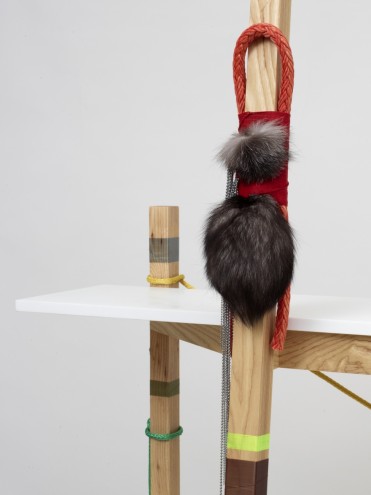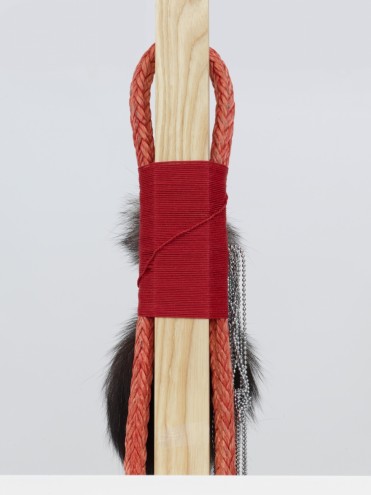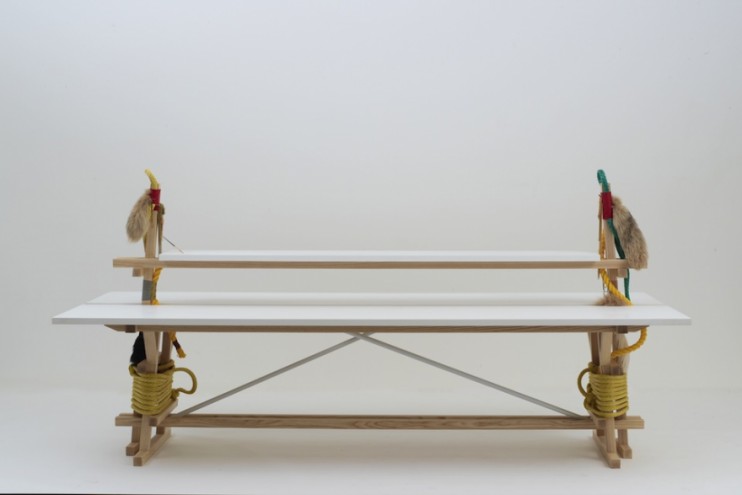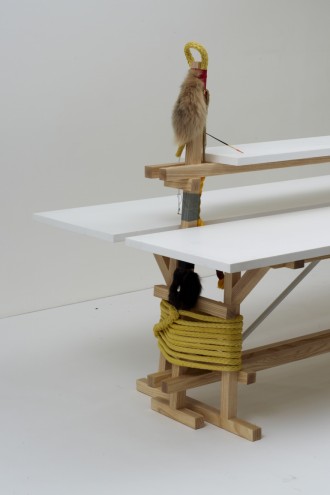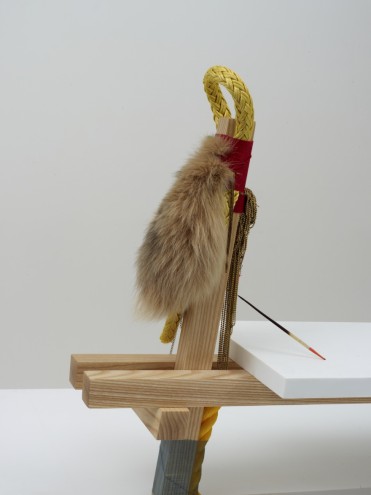A clutch of feathers, a tuft of fur, colourful rope and an Icelandic craft all come together resembling the mystery of ritual objects for Brynjar Sigurðarson’s latest furniture collection.
The Silent Village Collection is inspired by Sigurðarson’s field trip to the small town of Vopnafjörõur in North East Iceland in 2009 to conduct a research study for his senior year project at the Icelandic Academy of the Arts. He spent four weeks in the wilderness, wandering the harbour, meeting locals and discovering the natural heritage of his country. By chance the designer met a 70-year-old shark hunter who taught him a remarkable knitting technique that would form the inspiration for his one-of-a-kind furniture collection a few years later.
The knitting technique involves using a netting needle and nylon string to create nets for the traditional one hundred day lumpfish catching season.
When I first discovered the roping method at the fisherman’s workshop, it felt like I had connected with a hidden Icelandic craft. Even though I had no specific use in mind, when I started experimenting with these modest ropes, I found that they had endless possibilities for aesthetic use, says Sigurðarson.
Taking the intricate roping technique out of its traditional environment and applying it to furniture design processes, Sigurðarson ultimately introduced an explosion of freshness into an otherwise lacklustre sphere of fishing techniques. Sigurðarson found once a craftsman’s technique is removed from its original conext and implemented into a new one, the function and meaning of the technique is transformed into a different meaning and aesthetic.
In all the pieces I use fishing rope, nylon strings, sport fishing equipment, fur and often feathers to create a furniture range that is inspired by the crafts and techniques of Iceland, says Sigurðarson.
The Coathanger is inspired by a study on metal structures found on fishing boat decks and poles used to hand fishing ropes on when they are not in use around harbours; “ I found it important to give only a slight decoration and indicate the actual function of the piece by hanging a rope on it”, adds Sigurðarson.
The Entrance Table is the boldest and most complex piece of the collection. The tuft of fur and the clutch of feathers contrast with the polished smoothness of the wood alluding to the cultural identity of Iceland, harking back to primitive cultures, the world of the Inuit. “For me the object steps into a place between reality and fiction. I see it as something emerging from the ocean, having gathered all sorts of objects and materials that have stuck to it or hang from it,” says Sigurðarson.
The Big Shelf is made using printed cotton, leather, Icelandic nylon ropes, fox fur and black feathers. “For this piece, I tried to create little scenes or scenarios that are midway between miniatures and decoration,” says Sigurðarson. Using hundreds of white ropes that flow down, Sigurðarson creates the idea that a hidden treasure lies beneath the white waterfall.
The Silent Village Collection is produced for an exhibition at Galerie kreo in Paris, which runs until 8 February 2014.

